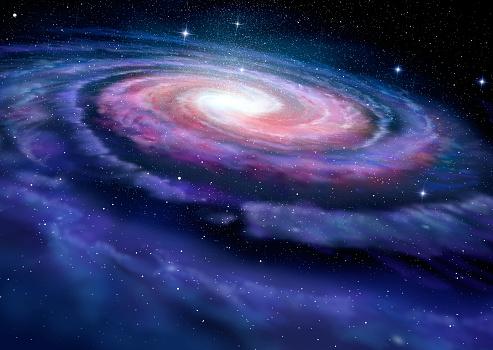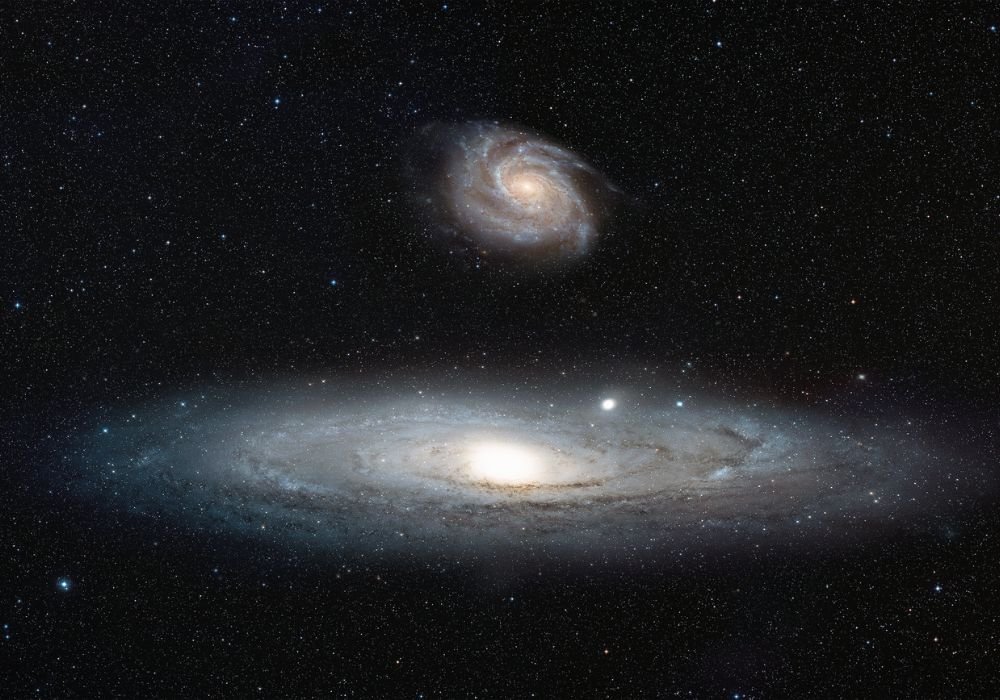Our galaxy, the Milky Way, may one day cease to exist. But don’t worry, there’s no need to panic! This event should only happen in a few billion years, when we can no longer tell the story.
According to scientists, The end of the Milky Way must have occurred as a result of the collision with AndromedaIt is the closest galaxy to us, approaching at a speed of 110 kilometers per second.
But how is it possible to know all this? A simulation made from data obtained by the Hubble Space Telescope was able to predict how this event would occur.
Although it is not possible for us to follow this collision, Something similar is happening about 90 million light-years away, more specifically in the constellation Aquarius. Recent images from the Gemini South observatory showed a strange galaxy called NGC 7727, the result of the collision of two other galaxies.
Scientists believe this process began more than a billion years ago; This shows that the collision between galaxies is slow and gradual, despite all the energy involved. At the center of NGC 7727 are two supermassive black holes, one each from the original galaxy. This could reveal what the future of the collision between the Milky Way and Andromeda will look like.
What are supermassive black holes?
Generally, black hole can be considered as the ultimate result of gravity. They are an object with an absurd mass packed into a small space, creating tremendous density, with an escape velocity greater than the speed of light. So you can think of them as a one-way street where nothing escapes. There isn’t even any light.
Unlike ordinary stellar black holes, which occur when a massive star dies and collapses in on itself, the supermassive version of this phenomenon occurs in another way. Most arose as a result of the condensation of huge gas clouds in the context of a younger, denser universe, or the collision of millions of stars collapsing under their own gravity.
It is believed that a supermassive black hole lies at the center of most galaxies in the universe, which is the “glue” that forms the entire clustered structure of stars and celestial bodies as we know them.
In the case of the Milky Way, we have Sagittarius A*, a black hole with a mass approximately 4 million times that of the Sun, located at the very center of the galaxy. Although it looks impressive, there are much larger examples in the universe.

For example, in the case of NGC 7727, The colliding supermassive black holes are both larger than Sagittarius A*. One of these has a mass of 6.3 million times that of the Sun, while the other is even more impressive, reaching a ridiculous mass equivalent to 154 million Suns.
They are currently about 1,600 light-years apart, forming the closest pair of supermassive black holes to Earth. Moreover, these are also the closest to each other to date. In every known universe, The title of largest supermassive black hole goes to TON 618, with a mass of approximately 66 billion times that of the Sun..
Did you like our content? So stay up to date on science and astronomy at TecMundo. If you wish, take the opportunity to discover how the Andromeda galaxy may answer the mysteries of dark energy.
Source: Tec Mundo
I’m Blaine Morgan, an experienced journalist and writer with over 8 years of experience in the tech industry. My expertise lies in writing about technology news and trends, covering everything from cutting-edge gadgets to emerging software developments. I’ve written for several leading publications including Gadget Onus where I am an author.












